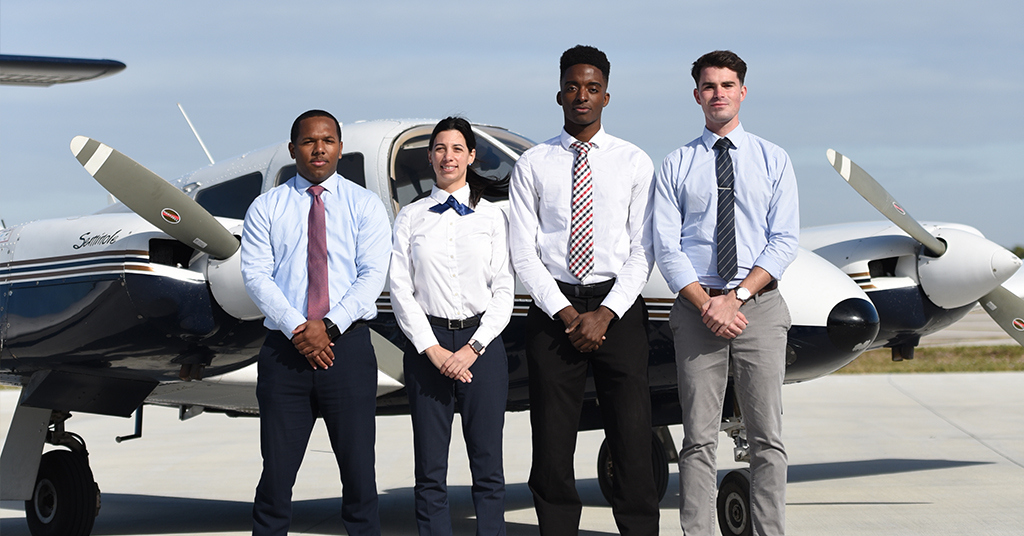By Andrew Henley
“I really want to be a professional pilot; do you think that’s a good idea?” That was the question I asked my high school guidance counselor. He looked at me like I was crazy. He said, “I have no idea, you should go to the local airport and find someone who knows more about the aviation industry.” Looking back, I’m not surprised by his response. The ’80s and early ’90s were a difficult time for the aviation industry. The glitz and glamour associated with airline pilots during the 1960s were now replaced with discouraged employees worried about losing their pensions. It certainly was not a job that any guidance counselor would recommend to a kid looking to make a career decision.
That was then, what about now? Is becoming a professional pilot a good career move? Yes, without a shadow of a doubt. Becoming a professional pilot in 2020 is a great career move. Why is that? What has changed over the last 20+ years? The short answer, a lot. In the 1960’s being an airline pilot was considered an upper-class job. You would see a pilot walking through the airport signing autographs for eager children. Pilots were more popular than movie stars. That changed in the late 1970’s thanks, in part, to the Airline Deregulation Act of 1978.
The Deregulation Act led to the exposure of competition which created heavy losses and conflicts with labor unions for a number of carriers. Beginning in 1978, and through the early 2000s, 7 major carriers (Eastern, Midway, Braniff, Pan Am, Continental, Northwest, and TWA), and countless others, went bankrupt or were liquidated. In short, this left a lot of pilots either furloughed or without a job. The industry made the pilot occupation so unattractive, so tenuous and poorly paid, that people stopped wanting to do it.
By 2001, the industry was dealing with the effects of another economic downturn. Business travel decreased substantially while, at the same time, labor and fuel costs were rising. The events of 9/11 greatly magnified the airlines’ issues, leading to a sharp decline in customers and significantly higher operating costs. It wasn’t until 2006/2007, that airlines began to turn a profit. While many airlines were grappling with their ability to turn a profit, hundreds, if not 1,000’s of airline pilots were reaching their mandatory retirement age.
In 2007, the mandatory retirement age was changed from 60 to 65. This new rule did not provide a long- term solution; it only kicked the pilot shortage down the road. Here’s the good news for anyone wanting a career as a professional pilot, with over 2,000 pilots retiring each year, professional pilot careers are becoming more and more popular. At its peak, within the next 5 years, over 3,100 airline pilots will retire each year. That means more opportunity and better pay for aspiring airline pilots.
Thankfully the needs of the airline industry have created a buzz among aspiring pilots. It makes sense, twelve years ago the average first-year pay for a first officer was around $20K per year. Today, the average sign-on bonus is almost $30K with their first-year compensation at well over $60K. Airlines are so eager to hire that they have created recruiting departments (this used to be a one-person job) that are responsible for going to career fairs, high schools, and colleges to educate a new generation of would-be pilots.
In years past, parents would ask, “how easy will it be for my son or daughter to find a job flying for the airlines?” I would give them an honest answer, “they’ll get there, I just don’t know how long it will take.” Today when asked the same question, I can point them to almost any airline’s recruiting webpage. There, they will see the typical path for an aspiring airline pilot:
After completing your flight training (Private, Instrument, Commercial Single and Multi-Engine, and your CFI-A and CFI-I), you will typically work as a CFI building your experience. The average flight instructor achieves 1,500 hours of flight time (ATP minimums for employment at a 121 carrier) within 16 to 18 months after they began flight instructing. From there, the instructor will begin flying for a regional airline. After two years of working as a first officer, the pilot will have the opportunity to upgrade to captain. After about six years working for the regional airline, they will then flow-through to a major carrier. Think about that the next time someone asks, “Is being an airline pilot a good career?” If you start today, you could be flying for a major airline in eight years!
I’ll end with this. If you are a guidance counselor, or you know one, please give them this issue of the Pilot’s Digest. Our duty as ambassadors of aviation is to promote this wonderful industry. More people need to know about the amazing opportunities associated with being a professional pilot.










